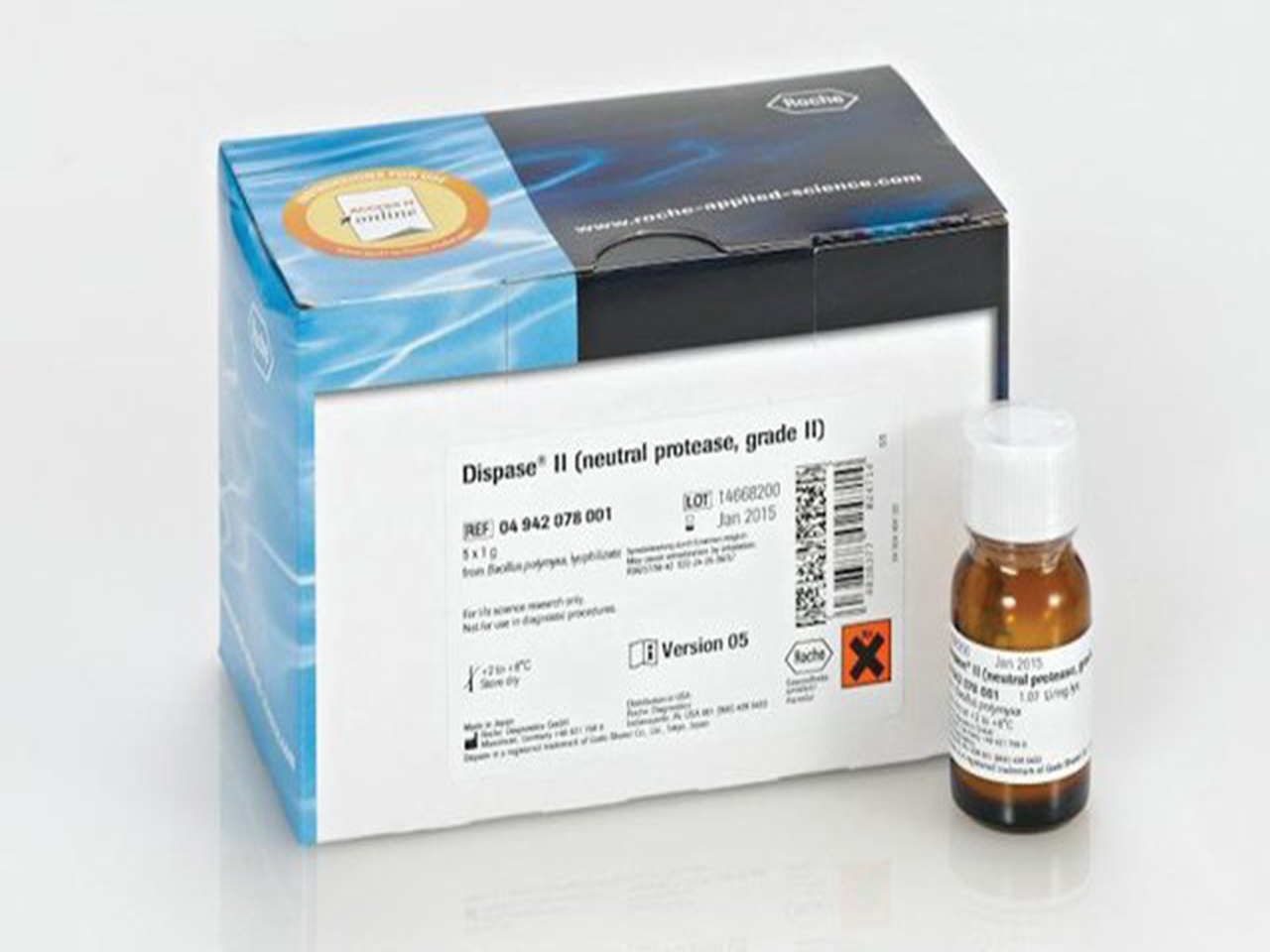
Features and Benefits
• Rapid, effective, yet gentle agent that liberates cells with minimal cell damage
• Maintains cell membrane integrity
• Non-mammalian source - free of mycoplasma and animal virus contamination
• Extremely stable to influences of temperature, pH, and interference by serum components
• Easily inactivated by chelating agents or by dilution
• Delivers higher activity and convenience
Other Notes
仅用于生命科学研究。不可用于诊断。
Preparation Note
Activator: Optimal Ca2+ concentration is 2 mM. The enzyme preparations contain enough Ca2+ for optimal activity.
Inhibitors: EDTA, EGTA, Hg2+, other heavy metals. Dispase is not inhibited by serum.
Working concentration: 0.6 to 2.4 U/ml
Working solution: Preparation of stock and working solutions:
To produce a 10 mg/ml stock solution, dissolve the lyophilized Dispase® II enzyme in HEPES-buffered saline (50 mM HEPES/KOH pH 7.4, 150 mM NaCl). To produce the working solution, dilute the above stock solution with the culture medium for the isolated cells, at a final concentration of 0.6 to 2.4 U/ml. Note that concentrations higher than 2.4 U/ml are not recommended. For best results, filter the working solution using a 0.22 μm filter membrane.
Storage conditions (working solution): -15 to -25 °C
The reconstituted stock solution is stable at 2 to 8 °C for 2 weeks. For storage up to 2 months the stock solution should be frozen in aliquots. Avoid repeated freezing and thawing! The working solution diluted with PBS is stable at 2 to 8 °C for 3 days.
Specificity
Dispase is a nonspecific metalloprotease.
Unit Definition
One unit is the enzyme activity which liberates Folin-positive amino acids and peptides corresponding to 1 μmol (181 μg) tyrosine in 1 minute under assay conditions (pH 7.5, +37 °C).
A practical comparison of Roche units of Dispase® II with those cited in the Japanese literature (where Dispase® concentrations of 1,000 to 2,000 units/ml are not uncommon) suggests that one Roche unit equals approximately 600 Japanese units of dispase.
One unit of Roche Applied Science Dispase® equals 181 protease units (PU) measured as release of amino acids equivalent to 1 μg tyrosine per min and ml at pH 7.5 and +37 °C.
Application
Dispase® is used for the preparation of cells from a wide variety of different tissues and organs. The enzyme has proven to be a rapid, effective, yet gentle agent for the disruption of extracellular matrix of tissues for releasing single cells for cell culture (primary cell culture) or harvesting cells already in culture to transfer to new substrate (secondary culture).[2][3][4] Furthermore, it is used to prevent unwanted clumping of cells cultured in suspension.
General description
Dispase is a neutral, rapid-acting, gentle protease that separates intact epidermis from dermis. It also separates cultured intact epithelial cells from the substratum. It cleaves the basement membrane zone and leaves the epithelial cells intact.
温馨提示:不可用于临床治疗。